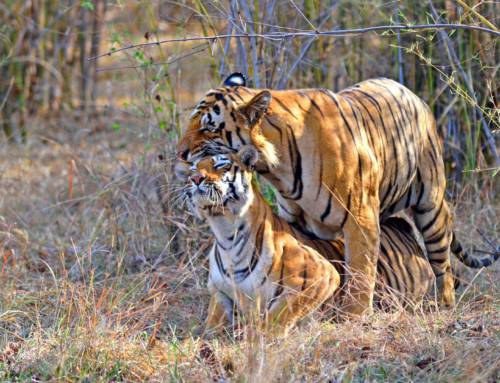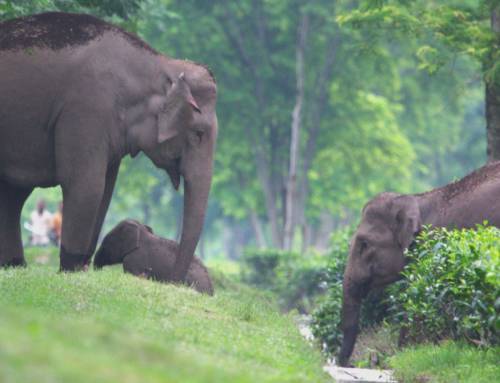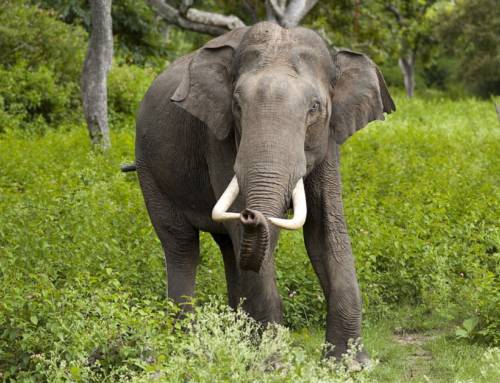Research Article: Karanth, K. U. (1992). Conservation prospects for lion-tailed macaques in Karnataka, India. Zoo Biology, 11(1), 33–41.
Blog Author: Deep Gogoi
Key Takeaways:
- Lion-tailed macaques, a symbol of the rich biodiversity of the Western Ghats, are under threat.
- Habitat loss, forest fragmentation, development projects, and hunting are endangering their survival.
- Forests are shrinking into smaller patches, and illegal activities are putting immense pressure on their habitat.
- By making the macaque a flagship species for rainforest protection, we can raise awareness about preserving these forests.
- With strong laws, community support, and sustainable actions, these macaques and their ecosystem can thrive again.
Nestled in the ropy tracts of India’s Western Ghats lies one of nature’s most enchanting creatures – the lion-tailed macaques. With their beautifully deep-cut manes, innocent pranks, and unique place in the ecosystem, these primates are the very symbol of what the region presents in terms of impressive biodiversity. Nevertheless, the significance of their role in the ecosystem is mirrored by the growing threats to the very foundation of the region’s rich biodiversity. Now under threat from habitat loss driven by expansion of human settlements, developmental projects, and poaching, their population is facing a drastic decline. Their survival is in jeopardy due to the rapid fragmentation of their primary home – the lush forests of Karnataka’s Western Ghats.
The Western Ghats are rich in biodiversity, and the evergreen forests of Karnataka are among the last remaining sanctuaries for the lion-tailed macaque. While much of this habitat remains, the quality of the forests is quickly diminishing. Human settlements have fragmented the forests into small patches, making it harder for macaques to find the resources they need to survive. These forests were once vast and contiguous, but many of the remaining patches are now narrow strips – sometimes as small as just one kilometer wide. The shrinking habitat, combined with illegal activities such as land encroachment, firewood collection, and grazing, is putting immense pressure on the macaques’ natural home.
Despite these challenges, there is hope. Field surveys showed that about 2,018 square kilometers of wet evergreen forests exists in Karnataka, of which approximately 50% is remote enough to provide potential habitats for lion-tailed macaques. These areas are largely protected under the Reserved Forests Act, with strong legal safeguards provided by laws such as the Indian Forest Act, 1927 and the Wild Life (Protection) Act, 1972. Conservation efforts in the region have been successful in stabilizing some areas, especially with the help of active community movements and government protection. The creation of protected areas like Talakaveri and Kudremukh has been instrumental in safeguarding the macaques and their habitat. However, more work is needed to ensure these efforts continue to succeed in the face of growing threats.
Developmental projects pose another significant challenge. Major projects such as dams, mining, and roads have caused substantial damage to the macaques’ habitats, leading to further fragmentation of the forests. Notable projects like the Sharavathi hydroelectric project and iron ore mining in Kudremukh have contributed to habitat loss, making it increasingly difficult for the macaques to thrive. Even though opposition to these projects exists, political and economic pressures often lead to their continued implementation. The solution lies in taking proactive steps, such as relocating human settlements away from critical macaque habitats. By doing so, we can reduce habitat degradation and provide displaced communities with access to better services.
Hunting, although less common, also continues to threaten the macaques, particularly in the southern regions of Karnataka. Here, certain communities still hunt the macaques for food. While hunting pressures are lower in the northern regions, some migrants from neighboring states like Kerala have introduced new hunting risks. Strengthening enforcement of anti-poaching laws and increasing awareness among local communities and forest staff are essential to tackling this problem. With more education and stronger enforcement, we can reduce the hunting pressures on these endangered primates.
While captive breeding programs have been suggested, they are costly and often fail to address the core issues driving the macaques’ decline. A more effective and sustainable strategy lies in protecting and restoring their natural habitat. This can be achieved by increasing the number of forest guards, regulating harmful activities, controlling fires, and supporting forest regeneration. By prioritizing these efforts, we can help the lion-tailed macaque recover naturally in the wild.
The lion-tailed macaque is more than just a species – it is a symbol of the Western Ghats’ rich biodiversity and the urgent need for conservation. By making the macaque a flagship species for rainforest protection, we can raise awareness about preserving these forests. Through continued conservation efforts, community involvement, and sustainable policies, we can ensure that these incredible primates continue to thrive in their natural habitat for generations to come. With determination and action, we can secure a brighter future for the lion-tailed macaque and the entire ecosystem they inhabit. To learn more, click here.
Keywords: Primates, Western Ghats, rainforests, habitats




